Pleistocene sediments of the Shitsukari-Abe cave have yielded several burned bone fragments. There is no vestige of natural fire around the cave, so these burned bones are considered to be the result of Paleolithic human activity. Species identification through gross morphology alone was impossible because they were broken into tiny pieces. Because the internal structure of bones differ by species, microscopic analyses were performed on thin sections of two of the Shitsukari-Abe burned bones to identify the species.
Histomorphometric assessments of secondary osteon size and cortical bone thickness of the two burned bone samples revealed that the microscopic characteristics were similar to those of hare and/or small- to medium-sized carnivores like marten and raccoon dog. Both hare and small- to medium-sized carnivores were excavated from Pleistocene sediments of the cave, with hare being the predominant species of the Pleistocene faunal assemblage. Our results reinforce the view that the Paleolithic people at the Shitsukari-Abe Cave utilized small mammal resources such as those mentioned above.
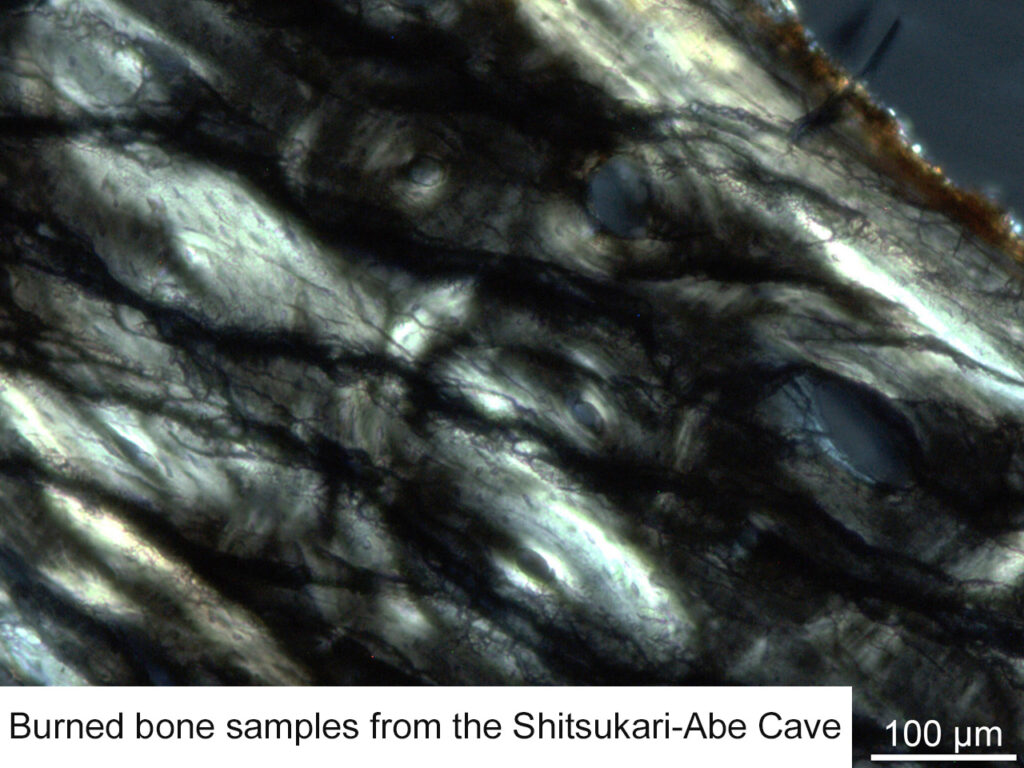
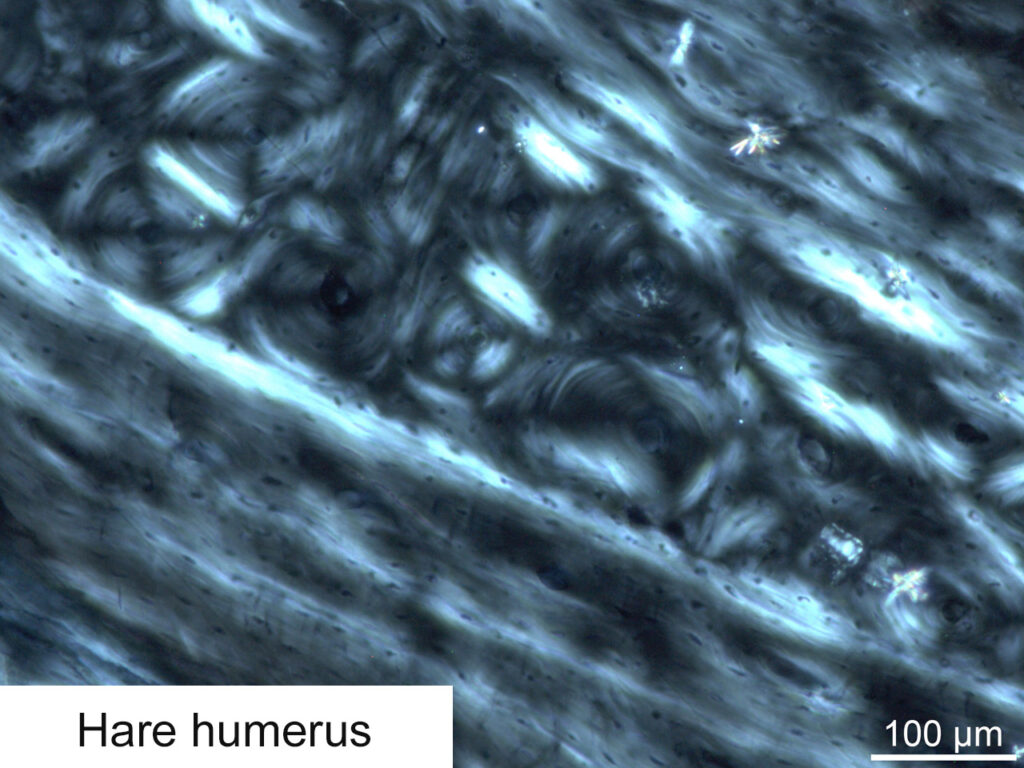
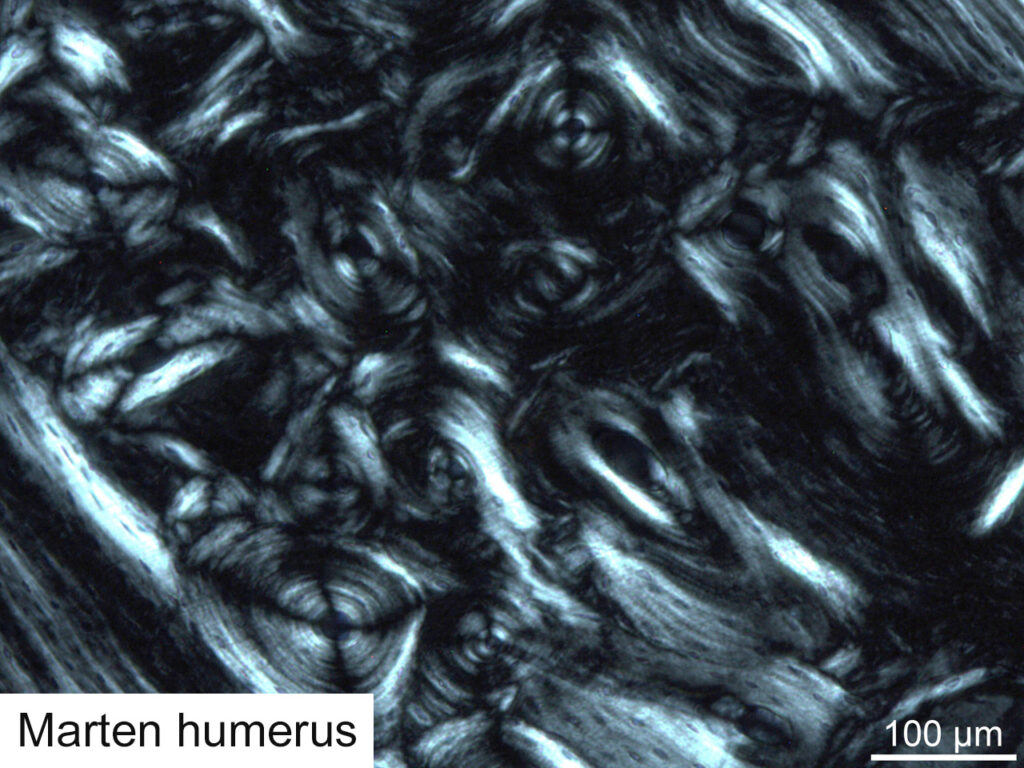
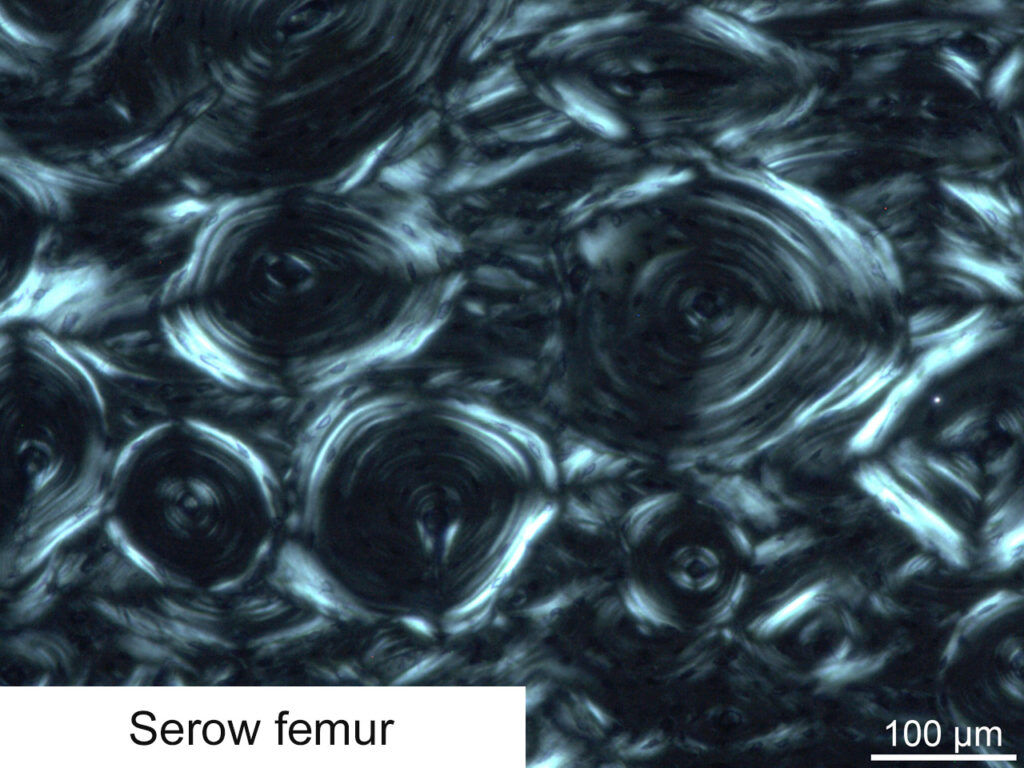
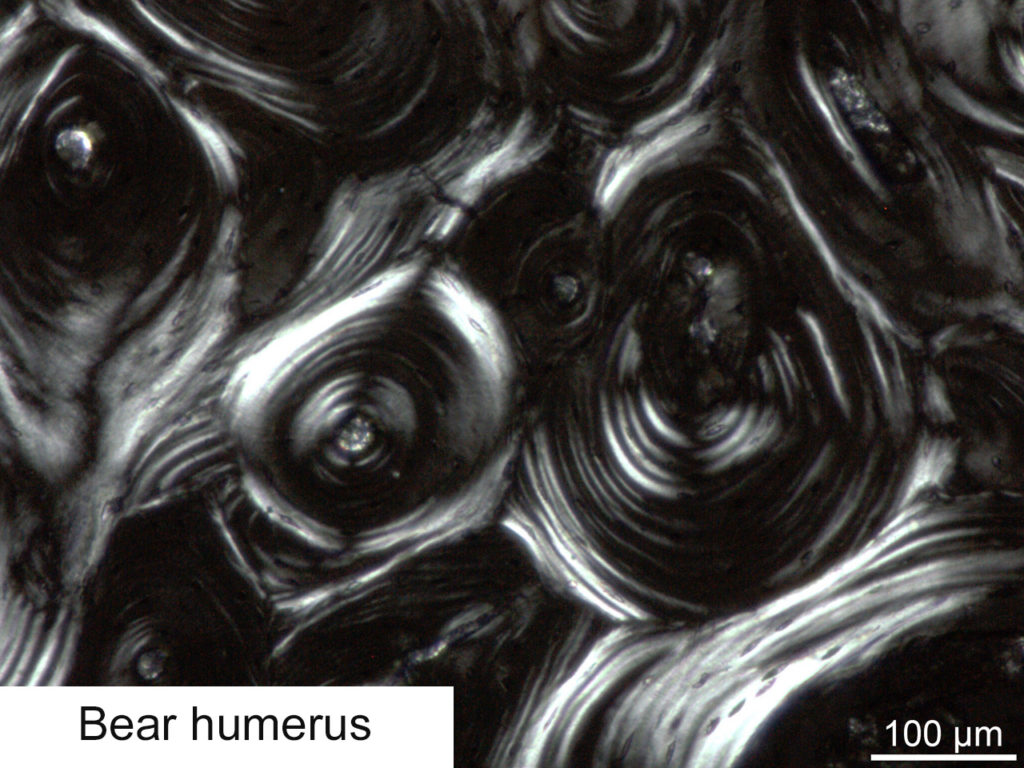
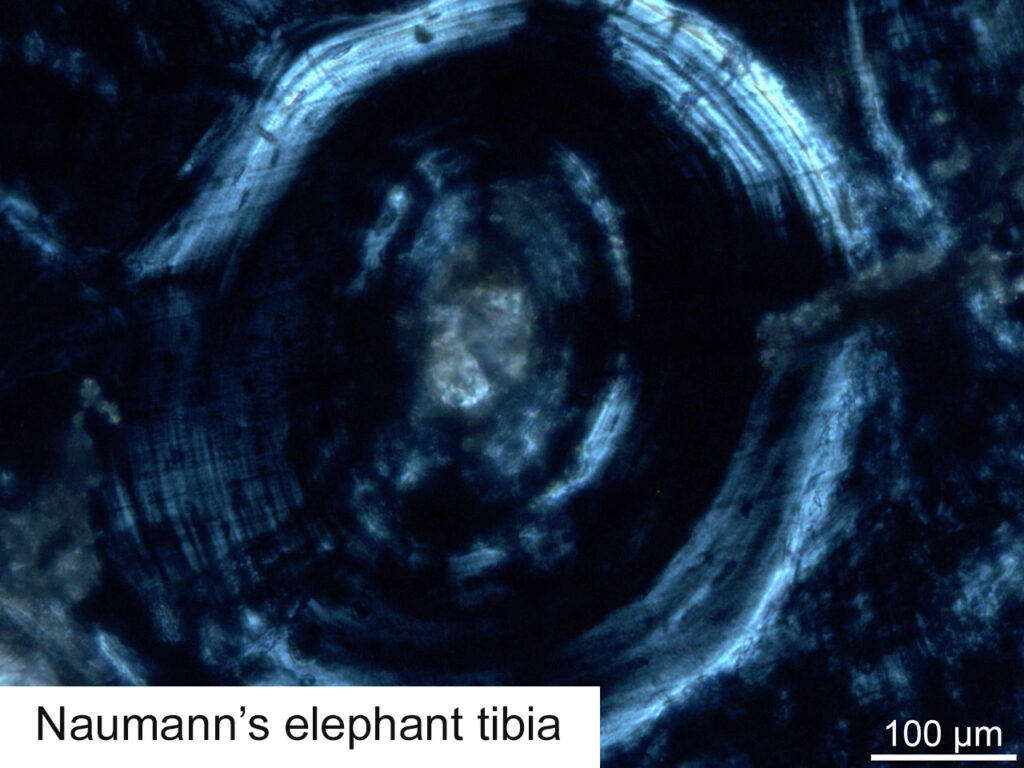
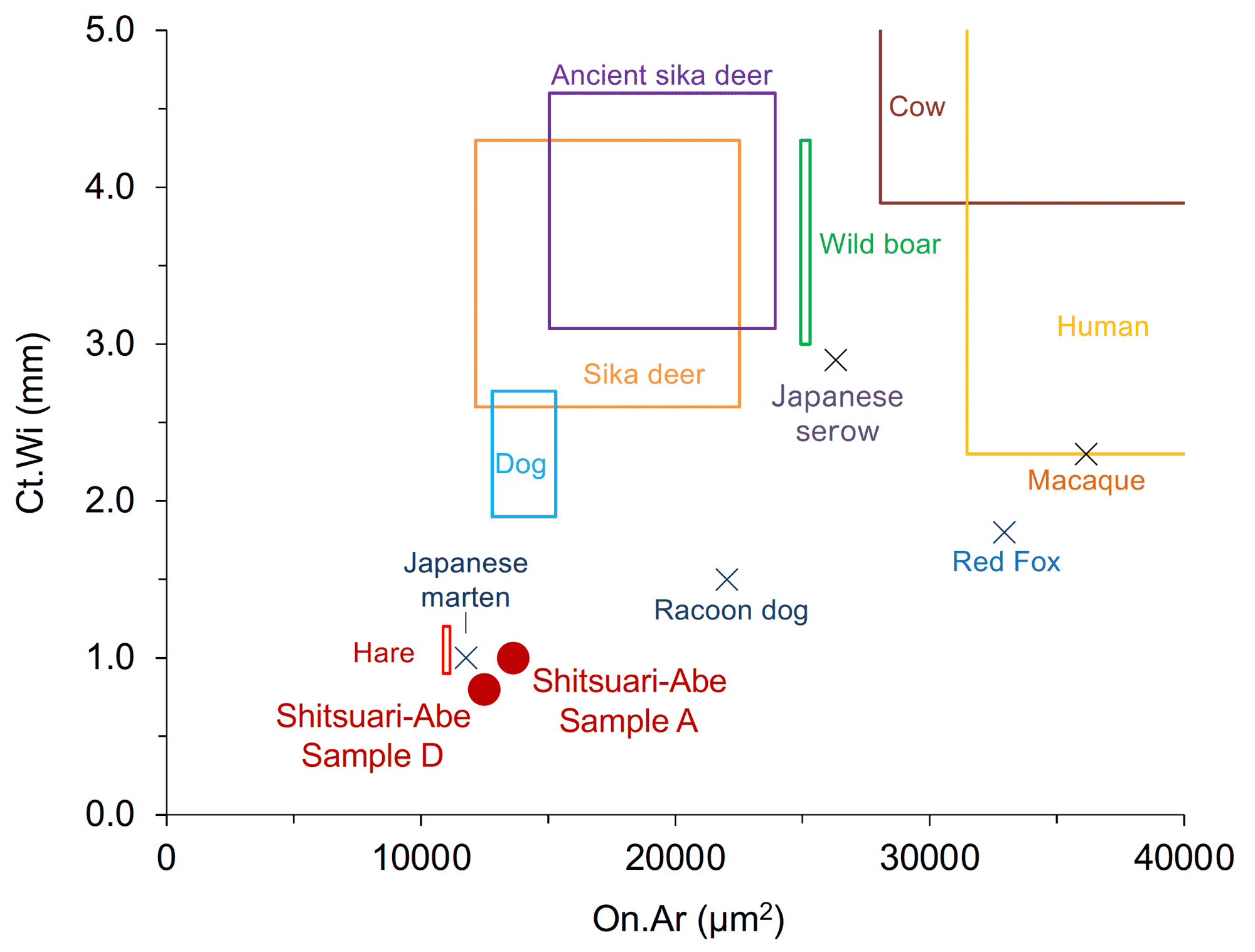
Mean ranges of the secondary osteon area and cortical bone thickness of the burned bone samples from the Shitsukari-Abe Cave, and comparison with other specimens